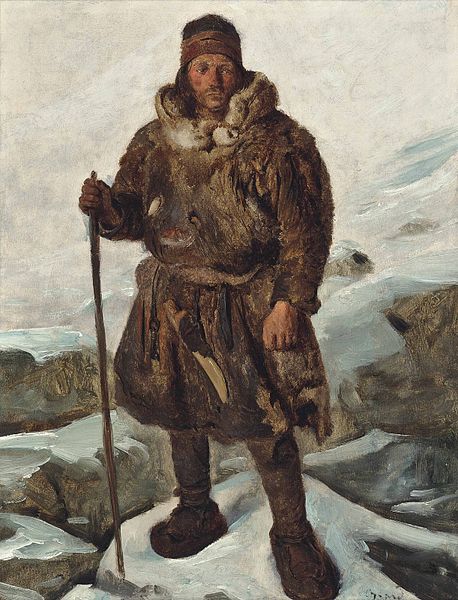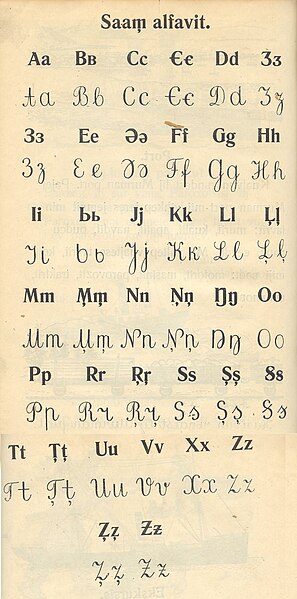The Sámi are the traditionally Sámi-speaking Indigenous peoples inhabiting the region of Sápmi, which today encompasses large northern parts of Norway, Sweden, Finland, and of the Kola Peninsula in Russia. The region of Sápmi was formerly known as Lapland, and the Sámi have historically been known in English as Lapps or Laplanders, but these terms are regarded as offensive by the Sámi, who prefer the area's name in their own languages, e.g. Northern Sámi Sápmi. Their traditional languages are the Sámi languages, which are classified as a branch of the Uralic language family.
Sámi outside lavvu, c. 1910
A Sámi depicted in art, painting by François-Auguste Biard
Aleksander Lauréus's painting of the Sámi by the fire
A Sámi family in Norway around 1900
Sámi languages, in English also rendered as Sami and Saami, are a group of Uralic languages spoken by the Indigenous Sámi people in Northern Europe. There are, depending on the nature and terms of division, ten or more Sami languages. Several spellings have been used for the Sámi languages, including Sámi, Sami, Saami, Saame, Sámic, Samic and Saamic, as well as the exonyms Lappish and Lappic. The last two, along with the term Lapp, are now often considered pejorative.
Administrative living areas and municipalities that recognise Sámi as an official language in the Nordic Countries
Sami Primer, USSR 1933
A t-shirt for the Norwegian Labour Party. From top to bottom: Northern Saami, Lule Saami, and Southern Saami.
A trilingual road sign for Jokkmokk. From top to bottom: Swedish, Lule Saami, Northern Saami








